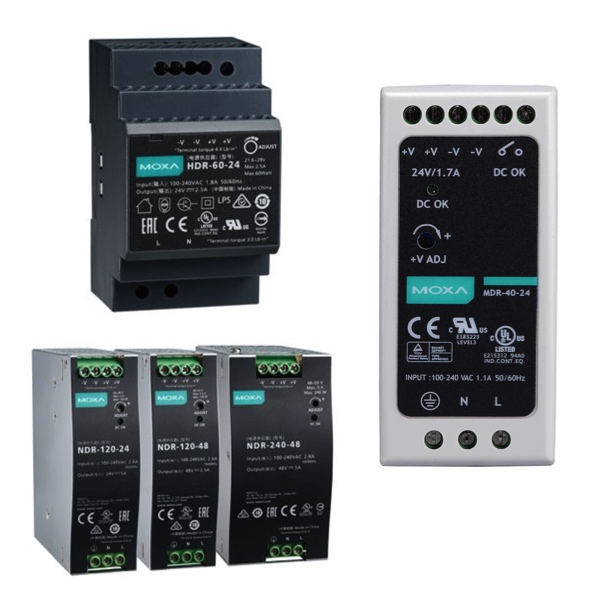Moxa Power Supplies

Moxa is known for its reliable and robust power supplies. They are built to handle high temperatures, intense vibrations, and hard electrical noise—stuff that can knock out a weaker power supply. With Moxa, you've got a serious power supply that's going to perform for you out in the real world, no matter what your industrial environment throws at it.
The effective and efficient performance of Moxa din rail power supplies reduces the amount of energy consumed. This is not only good for the environment but also good for your equipment because the less energy your power supplies consume, the less heat is generated. The power supplies that Moxa offers work efficiently, and they're also long-lasting.
Moxa power supplies have a design in which safety and security are the main characteristics. The power supplies have protection mechanisms, which are very extensive, and cover a wide variety of events, to protect them not only from internal malfunctions but also from external influences. These mechanisms are there to protect both the connected devices and the power supply itself. They are, as always, a kind of "double protection" that ensures safe and reliable uninterrupted service in a well-regulated industrial environment.
How to Select and Size a Power Supply
A power supply alters power from one type to another and ensures that the voltage being delivered is the proper level, with the right characteristics, to enable equipment to function properly.
Power rating
If a power supply is rated for 5 amps at 24 VDC, (where voltage times amperage equals total wattage) the power rating for that power supply is roughly 120 Watts. This rating is very important because if this number is exceeded, it can cause a failure of the power supply and potentially damage other hardware wired downstream or on the load side of the device. To avoid this failure is important that the power supply is sized correctly.
Sizing a power supply
To properly size a power supply, identify what devices will be reliant on the power supply and what their total power consumption will be. The sum of all power to be delivered needs to be less than the total power rating of the power supply. For example, if the devices combined for a total of 100 Watts, then a 5 AMP power supply, which is rated for up to 120 Watts, would be sufficient. However, if the sum of those devices’ total power requirement is greater than that of the power supply rating, then a different power supply should be selected. It is important to allow for a buffer or safety factor. When sizing a power supply, never select a power supply that is rated for the same amount of power as the total power requirement of all of the devices. Oversizing the power supply will allow for changes and additions that may occur in the future.

